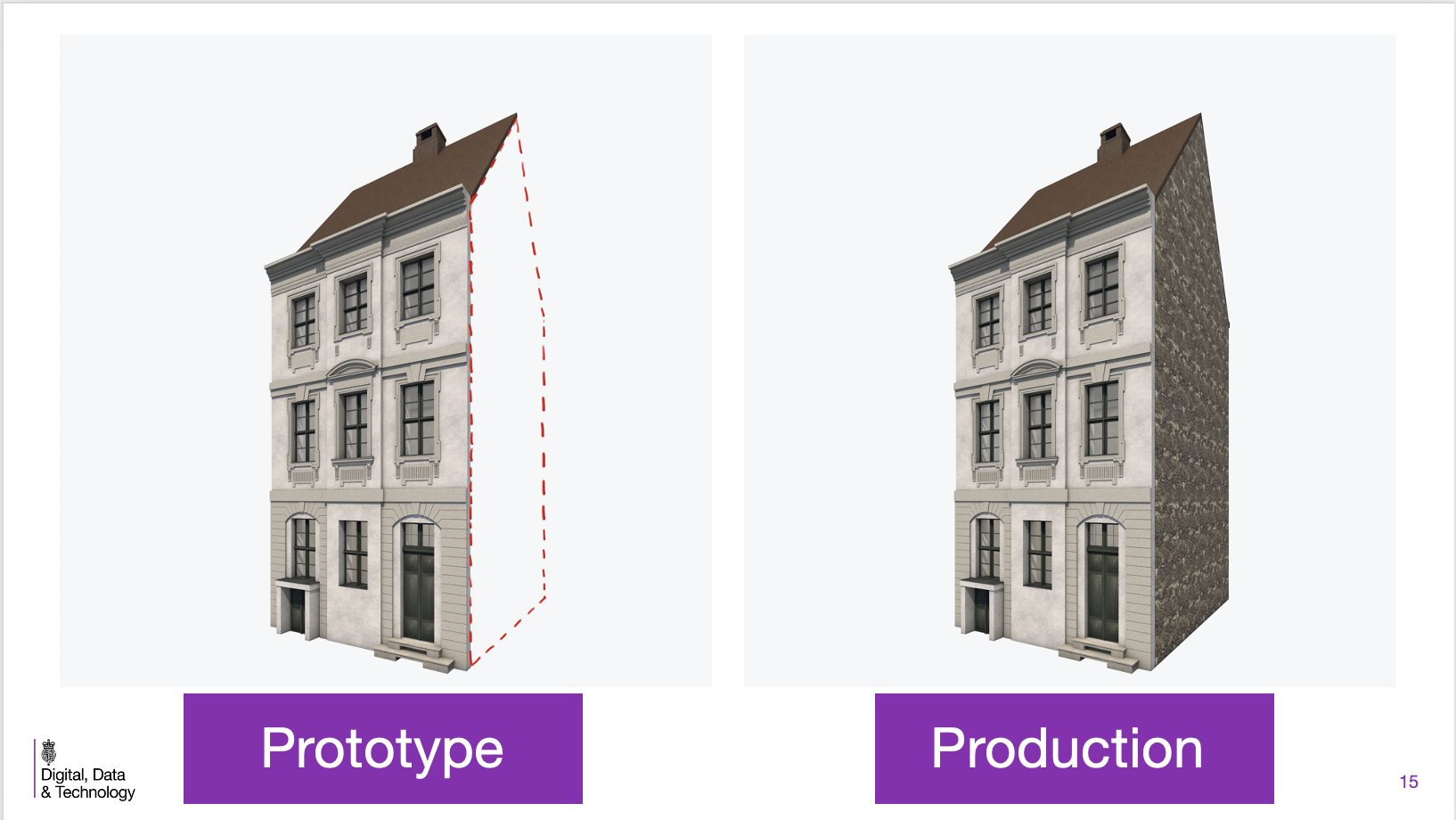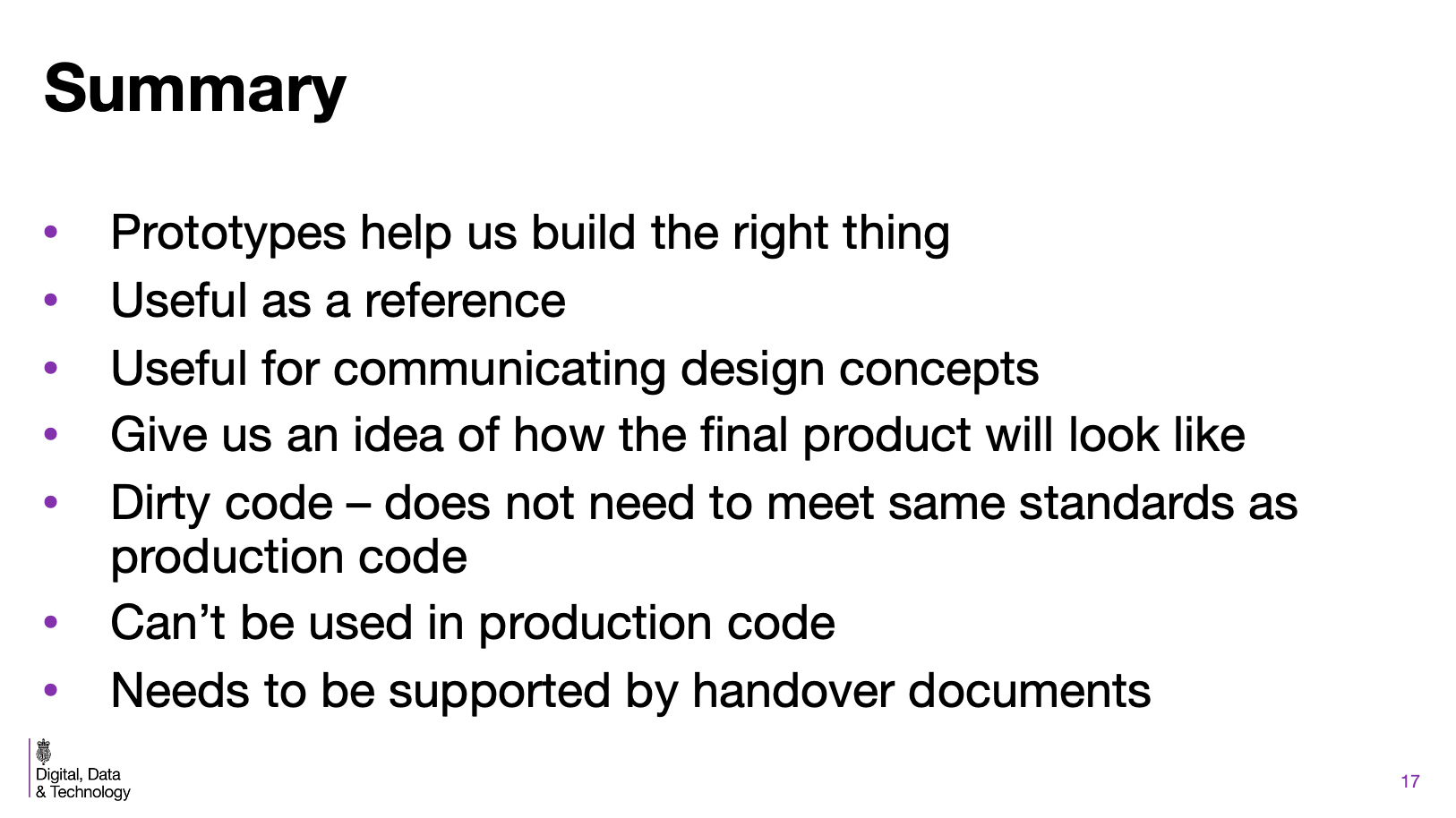Creating a DDaT community resource
How to use UCD Prototypes for Developers
Background
While working on an internal project, us designers realised that there were recurring issues with the use of the prototype. Those included incorrect use or styling of components, copied prototype code and misunderstood functionality.
People involved
- Me and my project mentor
- 1 reviewer from the UCD Community
Explanation of acronyms
DDaT refers to the Digital, Data and Technology Profession within government.
UCD stands for "User-centred design" which is a methodology in which designers
keep users and their needs in mind in each phase of the design process.
Within DDaT, user-centred disciplines such as interaction design, content design and user research fall under the UCD umbrella.
The trigger
To solve this issue and help bridge the gap between dev and design, it was suggested to host a lunch & learn session which is a common format for quick learning session across DDaT.
The Process
Before jumping in and designing something from scratch, me and my mentor had a brainstorming workshop to think about how designers and developers use prototypes respectively. We went through these questions on a mural board which would then be used as a base for the lunch & learn presentation.

Once the prep work was done, I set out to create the presentation I would use to explain how to use prototypes.
My project mentor Emma asked in the UCD community channel to see if anyone had done anything similar and would like to pitch in and we had a volunteer who was interested in running such a session themselves. Will had encountered similar issues on his project and was keen to get involved.
I organised a catchup once my presentation was done and ran through it with Emma and Will who gave me pointers on what to improve and what else to include. Once I did my iterations, I moved on to scheduling the session.
Holding the presentation
I organized the meeting by asking the technical delivery manager when the best timeslot would be for such a session. I then ensured everyone from the technical team, the PMs as well as the UCD team was invited.
The presentation went well and it kicked off a good internal team discussion on what development needed from design to avoid incorrect use of the prototype happening again.
Both teams listened and were able to meet each other halfway. As a follow-up, the design team came together to see where we could improve our handover files.


Left: Comparing prototype and production environments to houses – where the prototype is just a façade, production is a real house will all its walls and interiors present.
Right: The summary on how to use prototypes from the deck I made.
The outcome
Within my project team, doing this presentation helped build mutual understanding between development and design. The devs better understand why design creates prototypes the way we do, whereas we as designers understood better how we could improve our handover.
For my personal development, holding this presentation helped me improve my advocacy for design skills and made me a more confident presenter to professions outside of my immediate UCD community.
The impact
Due to positive feedback from other interaction designers, I decided to adjust the presentation to be more generic and less specific to my project team, and make it available as a DDaT resource that could be adapted to any project team.
I showed the presentation to a wider group of interaction designers within DDaT at the Interaction Monthly regular meetup.
I was then asked to present this resource again at a bigger UCD meetup in November 2022. The slide deck I created is now part of DDaT's community resources and accessible by anyone in the profession to use for their own project team.
← Back to Portfolio Overview